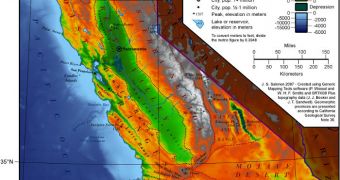Early in 2010, a massive earthquake of magnitude 8.8 struck Chile. The tectonic event may have in the end triggered a large number of tremors as far away as California, thousands of miles north. The tremors it caused were however of a significantly lower magnitude.
The Chile event was so powerful that it moved cities across South America in various directions from their original locations, by a sufficient margin to allow for the change to be detected by GPS.
It is also estimated that the tremor caused a small shift in Earth's rotational axis. More than 521 people lost their lives in Chile, some 12,000 were injured, whereas some 370,000 homes were destroyed.
Given the magnitude of the event, the fact that it also made its effects felt such a large distance away should come as a surprise to no one. Previous studies have evidenced that major events such as this one can influence similar ones long distances away.
For example, earthquakes at one location might trigger other tremors, tsunamis, or even volcanic eruption. The type of effect they have is heavily dependent on the location of their epicenter.
“We now know that a very large earthquake like the 2004 Sumatra earthquake and the 2010 Chile quake can trigger seismic activity potentially at anywhere within the Earth, because the seismic waves from such major earthquakes are large enough to circle the entire globe,” explains Zhigang Peng.
The seismology expert and study researcher is based at the Georgia Institute of Technology (Georgia Tech), in Atlanta, the United States. He and his colleagues proposed in a new research that the Chile event caused four earthquakes in California.
The seismic events it triggered had a magnitude of 2 or higher on the Richter scale. A magnitude-3.5 tremor that shook the Coso Volcanic Field was the most intense of the bunch, the group reveals.
This particular area is located a full 5,730 miles (9,220 kilometers) away from the location of the original Chilean earthquake. Statistical calculations revealed that there was a 99 percent chance that the two tectonic events were tied to each other.
“Earthquakes talk to each other. Many scientists have found that when a large earthquake occurs, it will trigger numerous earthquakes, mostly around the previous one, which are known as aftershocks. Some of them could be potentially dangerous,” Peng goes on to say, quoted by Our Amazing Planet.
“So far we have found much evidence that large earthquakes could trigger small earthquakes at long-range distances. We have yet to see a damaging earthquake triggered at very large distances,” the expert adds.
Details of the new study proposing the connection appear in the December 31 issue of the esteemed scientific journal Geophysical Research Letters.

 14 DAY TRIAL //
14 DAY TRIAL //